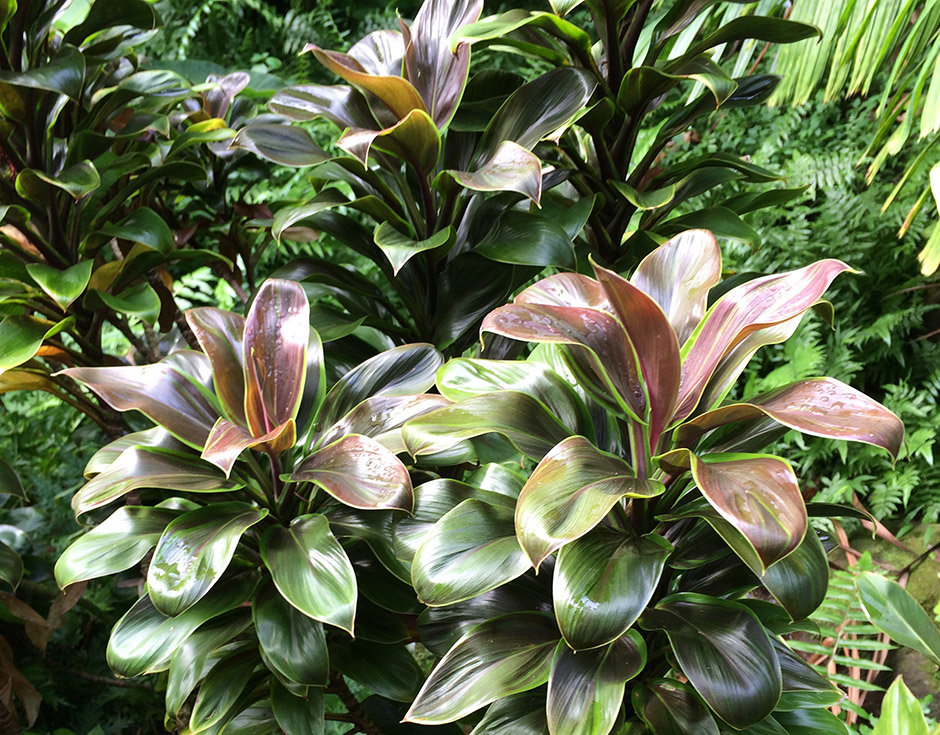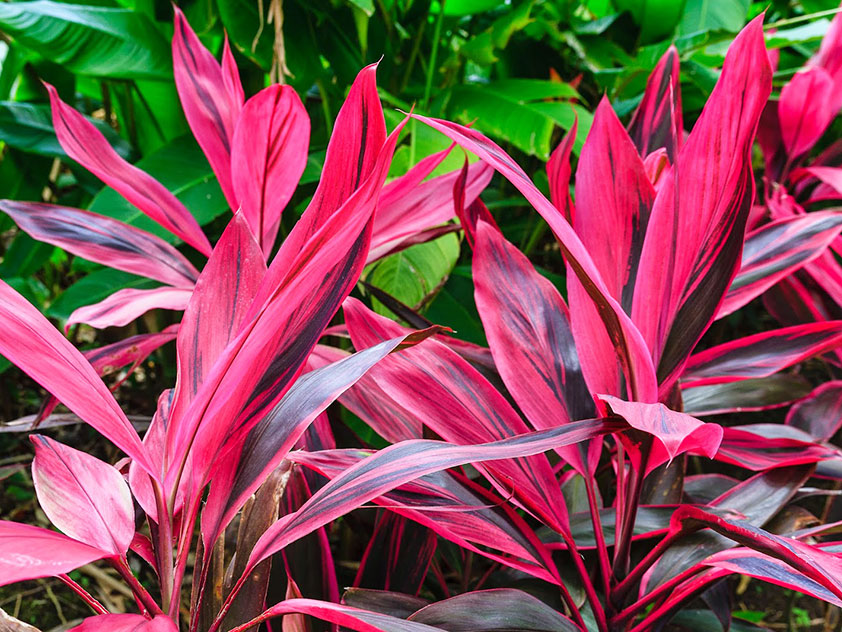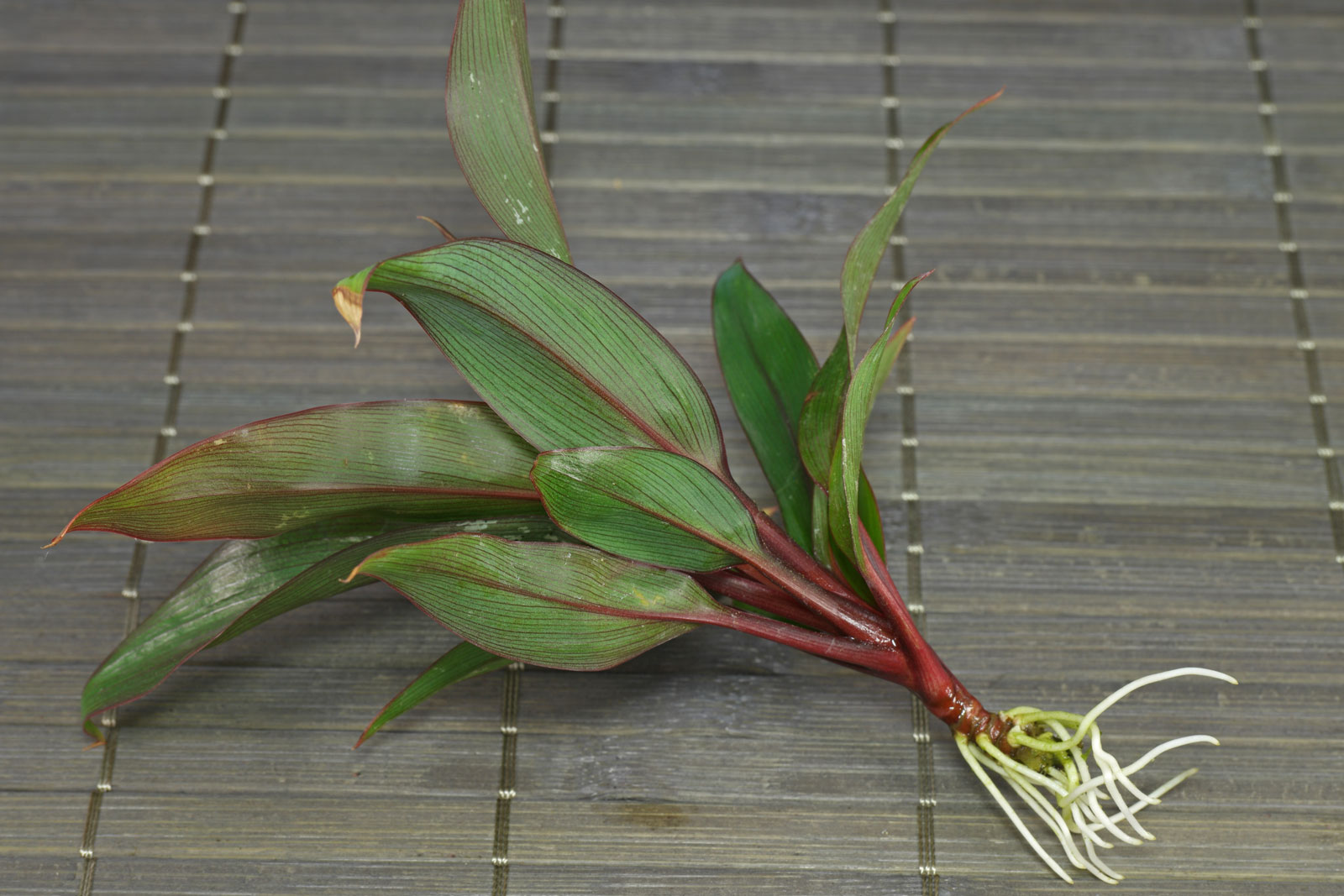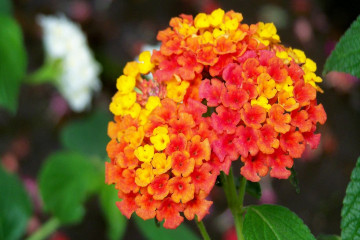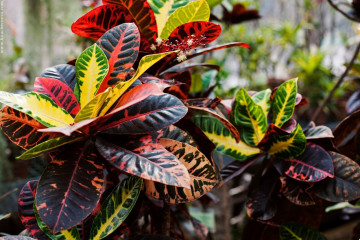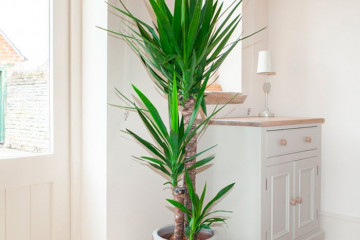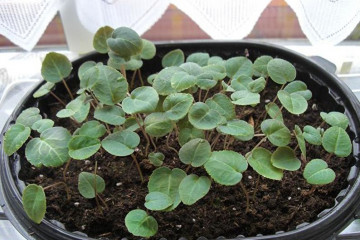Cordilina flower: home care and propagation methods
Content:
It is customary that the cordilina flower adorns administrative buildings, offices, and on the Black Sea coast of the Caucasus it is an ornamental plant that makes boulevards, alleys of parks and squares elegant. The riot and unusual shades of interesting leaves stop the eyes, make you think: why not bring such beauty in your apartment. Moreover, cordilina care at home for which does not cause much trouble, will respond to attention to it with a bright outfit of its leaves.
Main types
Cordyline is a genus of plants belonging to the Asparagaceae family. The name of the genus comes from the Greek word cordylle - cone, knot due to swollen, fleshy roots in the form of cones.
In the wild, it grows in the tropics and subtropics in Australia, Asia, and South America. Occurs in the form of trees, shrubs and semi-shrubs that form shoots.
The plant is distinguished by a spectacular appearance of leaves, which are often located at the top of the trunk. In some species, new ones are separated from the main trunk, which can be used for reproduction.
Hard, succulent leaves, both with and without petioles, lanceolate, xiphoid. Leaf venation is arched and linear. The color of the leaves includes dark green, pink, scarlet, yellow and purple hues. Because of this feature, another name appeared - "royal tree".
With proper care, even a houseplant Cordilina can please with flowering. Her inflorescences are in the form of a panicle. The flowers are small, white, light purple, red.
Over time, the lower leaves die off, exposing the trunk, which gave the second name to the plant - "false palm". Indeed, similar to the cordilina palm tree, a straight line with a bare trunk, it is also called narrow-leaved or thin. Inflorescences are pink, fruits are black. It can be found in greenhouses as an ornamental tree.
Dracaena is also considered a false palm. Sometimes dracaena is confused with cordilina. To distinguish them from each other, you need to compare the roots of two plants:
- In dracaena, they are straight, on the cut they are yellow or orange.
- The roots of the cordilina are sinuous, with knots and swellings, white on the cut.
The most important difference is the number of seeds. The fruit of the cordilina contains 4-20 pieces, the dracaena has one.
Noteworthy is the medium-sized cordilina Kiwi with elongated narrow dense juicy leaves bordered by a rim of pink or yellow tones. A purple inflorescence appears from the center. This type is widely used when creating landscape compositions because of its special frost resistance.
For the Cordilina mix, a feature is the adjacent leaves with a combination of many shades and colors.
The most undemanding of those grown at home is considered to be undivided cordilina; in the south of Russia it is planted in open ground.
Cordilina Fruicose
Cordyline fruticosa (Cordyline fruticosa) is one of the common types of cordilina, which is grown as an indoor flower. A plant with one trunk, but sometimes it divides into several separate trunks.
Wide lanceolate green leaves with a pointed upper part are attached to long petioles.Some varieties have a border, the color of which can be from light pink to maroon.
Southern cordilina
Cordilina southern - a native of New Zealand, at home reaches 15 m. Indigenous people eat young leaves as a vegetable, calling the plant "cabbage tree".
The barrel has a thickening at the bottom. Green xiphoid leaves are located at the top, their length reaches 90 cm, width - up to 7 cm. There are varieties with longitudinal stripes of yellow and red colors.
In summer, adult plants have large hanging inflorescences in the form of a panicle up to 1 m long from small flowers of white and cream shades, emitting a sweetish aroma. In place of flowers, small white fruits ripen.
At home, it grows up to 3 m, flowering usually does not occur.
Apical cordilina
Apical cordilina is the most popular among flower growers. This beautiful tree has wide leaves, often green, located along the entire trunk and top, in nature it grows up to 4 m.
The length of the leaves is up to 80 cm, the width reaches 10 cm. In some varieties, the foliage is yellow or red. Inflorescences consist of small flowers of white and purple shades.
Cordilina Rumba
The homeland of the plant is North Australia, Hawaii, Southeast Asia. In nature, it grows up to 3 m. At home - up to 1.5 m. It is distinguished by its unusual color of leaves: from bright green to scarlet, bright red and purple shades.
Home care
The main advantage of the flower is the simplicity of planting and care; there are no particular difficulties in growing. Like all representatives of the tropics, he loves light, warm and humid air. Does not tolerate drafts, sudden temperature changes.
Humidity
The flower should be provided with a high humidity of the surrounding air, it will respond well to regular spraying.
Temperature
In the warm season, temperatures of 20-25ᵒС will be comfortable for all species. In winter, people from the tropics prefer 18-20ᵒC, subtropical species will be content with temperatures lowered to 5-10ᵒC. A flower with a variegated color of leaves requires normal room temperature during the rest period.
Watering
Watering is carried out in the usual way, watering from above or into a tray. The second way is preferable. Use only settled water at room temperature.
When the top layer dries up, the soil is moistened, 1-2 waterings per week are enough in the summer, in the cold period - once a week and one and a half. When the temperature drops in winter, the number of irrigations and the volume of water are minimized.
How often to spray cordilina depends on the origin of the plant:
- Natives of the tropics are sprayed every day from May to August, but can instead be placed in a tray with moistened expanded clay. The rest of the time - as needed. It is useful to wipe the leaves with a damp sponge.
- For subtropical species, the procedure is rarely carried out.
Priming
The substrate for planting is purchased in the store, a universal soil with a slightly acidic reaction is suitable, or prepared independently, mixing in equal parts:
- Leafy ground;
- Peat;
- Humus;
- Sand.
Fertilizers
Complex fertilizers are used for indoor ornamental deciduous plants, using slightly less than the dose indicated in the instructions. From the beginning of spring to September, feeding is carried out every two weeks.
Reproduction methods
For reproduction of a flower, they use the division of the rhizome, cuttings and sowing of seeds.
Seeds
The seed method at home is usually not used. It is time-consuming, and grown specimens do not inherit varietal characteristics, unlike dracaena, from the seeds of which new plants are often obtained at home.
Seeds are sown into the soil from turf and sand, pre-moistened, evenly distributed over the surface. You can use cassettes by placing 1 seed in each cell. Cover with foil, periodically watered and ventilated. Seedlings will appear uncommonly: the first - within a month, the last - after 3.
Seedlings from a common container dive when they rise 5-7 cm. They are planted in separate containers, keeping an earthen lump.
Cuttings
For reproduction, cuttings are used from the top or middle of the trunk up to 10 cm long with the presence of 1-4 nodes. Placed in a moist substrate or water, kept at a temperature of 25-30ᵒС. You can make a mini-greenhouse by covering the container with glass or film.
The roots appear in a month. Rooted cuttings are transplanted into pots with a substrate for adult plants: this is a mixture of humus, peat, sand with the addition of perlite.
Dividing rhizomes
To divide the rhizome, the plant is removed from the pot, the roots are freed from the ground, this is done during transplantation. The roots are washed, cut into pieces with a disinfected instrument, the sections are treated with a phytosporin solution. Rooting is carried out in loose light soil, covered with a film. Ventilate and water regularly.
A month later, when the roots are formed, they are transplanted into separate pots.
Plant diseases
High-quality care and the creation of favorable conditions exclude the appearance of pests and diseases. If there were any violations, the flower may get sick. This is evidenced by its appearance: brown spots appear on the leaves, they turn yellow, begin to fall off, cordilina stops growing.
Brown spots
The appearance of brown spots along the edge of the leaf indicates that the flower is blown by currents of cold air. It should be moved to another place where there are no drafts.
Leaves dry
When the lower leaves dry and fall, exposing the trunk, this is a natural process that does not cause fear.
If the tips of the leaves dry along the entire height of the trunk, then the air is too dry and humidification is required.
Putrefaction
Root rot appears quite often, which indicates waterlogging of the soil and a low temperature of the content. The flower withers, stops growing, the leaves dry out.
Falling foliage
The fall of the lower leaves is caused by a natural process. To renew the flower, the top is cut off, rooted and planted.
To create a multi-tiered composition, several plants of different heights are planted next to the high one.
Resuscitation methods
Drying the soil will cope with root rot, or transplanting into fresh soil and a new pot will help.
If brown spots are scattered over the entire surface of the leaf plate, then the plant does not have enough moisture.
Leaf plates lose brightness, fade, this is caused by a lack of light, rearrangement closer to the light will return the colors. The emerging leaves are small, deformed - the plant signals a lack of nutrition.
A burn from direct sunlight leaves light spots on the leaves. It is necessary to shade the cordiline with a curtain or place it where there is no direct sunlight. Darkening and curling of leaves are caused by a sharp temperature drop, the plant should be placed in a room where a constant temperature is maintained.
Eliminating all causes will return a healthy festive look to the cordiline.
A resident of the tropics won the title of an ideal indoor plant, settling in the houses of Russians. She will condescend to the mistakes made, but corrected in time in care, will respond to attention and care with the lush brightness of the foliage.
Video


